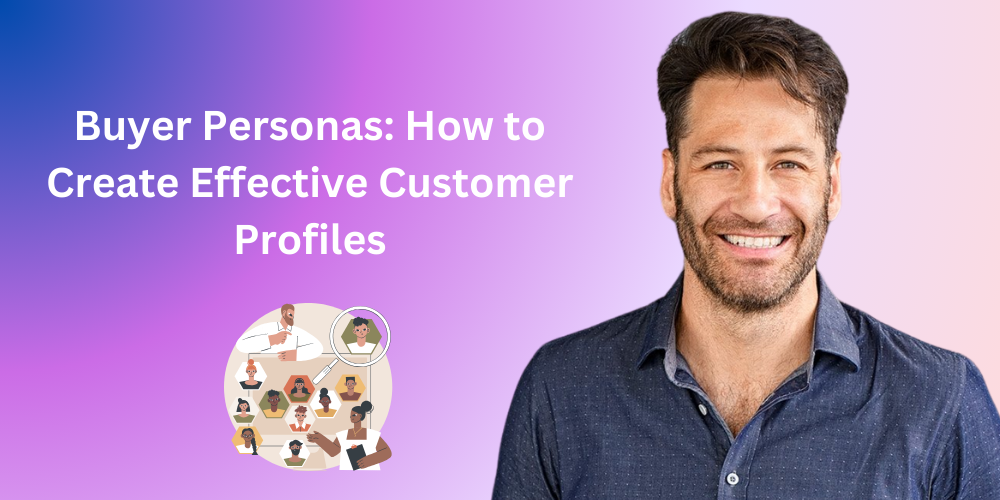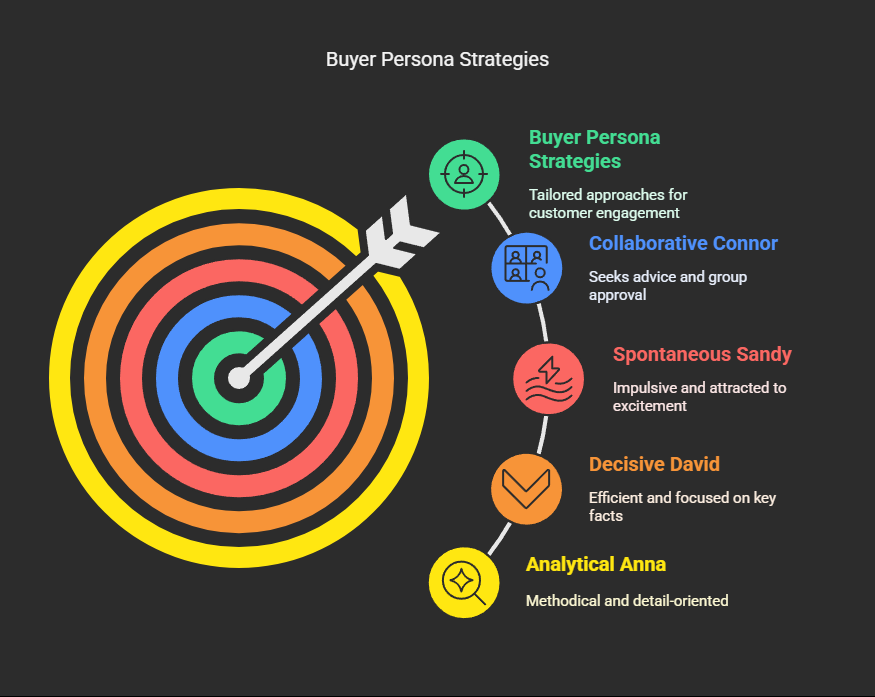Buyer Personas: How to Create Effective Customer Profiles

Creating effective customer profiles, commonly known as buyer personas, is crucial if you want your marketing efforts to resonate deeply and drive real results. But here's the catch: not all personas are created equal. In a world flooded with data, understanding who your customers truly are—and what motivates them—is your secret weapon. This article dives into exactly how to build precise, insightful buyer personas, ensuring your strategies hit the mark every time, turning prospects into loyal customers.
What is a Buyer Persona?

A buyer persona is a detailed, semi-fictional representation of your ideal customer, created by analyzing real data, market research, and insights from your existing customer base. It goes beyond simple demographics (like age or gender) to include specifics about customer behaviors, motivations, goals, pain points, and purchasing habits.
Essentially, a buyer persona helps you understand your customers at a deeper level, enabling you to tailor your marketing strategies and messaging effectively, resonate strongly with your target audience, and ultimately drive better engagement and higher conversions.
Why Buyer Personas Are Important for Marketing
Buyer personas aren't just fancy marketing fluff—they’re your ticket to smarter decisions. Think of them as cheat codes to your customers’ brains. By knowing exactly what your customers want (and don’t want), you can:
- Create content that grabs attention.
- Build products your audience actually needs.
- Personalize your marketing so well, your customers think you're reading their minds (not creepy, we promise).
And let's be real, people trust brands that understand their struggles. So, if your marketing sounds like a therapy session rather than a sales pitch, you're doing it right.
4 Types of Buyer Personas

Just like your friend group, your customers come with unique personalities, quirks, and ways of making decisions. Understanding these personas helps you create laser-focused messaging that truly resonates. Here are four common examples:
1. Analytical Anna
Anna thrives on details. She’s methodical, hates feeling rushed, and will probably read the fine print of the terms and conditions just for fun. To win her over, provide comprehensive information, thorough comparisons, data-backed proof, and plenty of time for consideration.
2. Decisive David
David doesn’t have time to waste. He's all about efficiency and getting to the point quickly. Skip the fluff, highlight key facts and benefits, and make sure your call to action is clear, strong, and immediate. If you hesitate, you lose David's interest—fast.
3. Spontaneous Sandy
Sandy buys first and asks questions later. Impulsive by nature, she’s attracted to excitement, flashiness, and innovative ideas. Engage her by showcasing new, trending products or limited-time offers. Emotional appeal and urgency are your best tools to convert Sandy quickly.
4. Collaborative Connor
Connor doesn’t make decisions in isolation—he seeks advice, group approval, and validation. He loves to ask questions and involves multiple stakeholders before committing. Build trust with Connor by offering testimonials, case studies, and social proof. Patience and a consultative approach are crucial here.
How to Use Buyer Personas in Marketing

Buyer personas make your marketing feel personal. Instead of blasting generic emails hoping someone responds, you'll send messages that customers actually want to open. Plus, your social media and ads will feel tailored, not like random spam that makes them block you faster than an unwanted DM on LinkedIn.
How to Create Buyer Personas (Step-by-Step Guide)
Creating effective buyer personas doesn't have to be intimidating. With a structured, collaborative approach, you'll quickly transform vague customer ideas into clear, actionable profiles. Follow these steps to create personas your whole team will love—and actually use:
Step 1: Gather Your Team
Start by bringing together key stakeholders from various teams, including sales, marketing, customer service, and even product design. Each person contributes unique insights and perspectives, making your personas richer and more accurate. Plus, collaboration ensures everyone feels ownership of the final personas.
Step 2: Conduct Thorough Research
Dive deep to understand your customers fully. Explore platforms like social media channels, Google Analytics, and your existing contact databases. Direct conversations—interviews and surveys—are goldmines of insight. Encourage customers to share openly by offering incentives like gift cards or discounts. Leverage tools like Keyhole.co and Hootsuite to streamline data collection and social listening.
Step 3: Analyze and Organize Data

At this stage, you're probably swimming in data, so now it’s time to distill and structure it. Tools like HubSpot’s persona-maker can simplify this process. Aim for a concise, clear one-pager per persona. Essential points to include:
- Challenges: What problems keep them up at night?
- Motivations: What drives their decisions?
- Buying triggers: What prompts action?
- Interests and hobbies: What do they enjoy or value?
Step 4: Link Buyer Problems to Your Solutions
Your personas aren't just descriptions—they’re actionable tools. Clearly connect each persona’s core problems or pain points directly to your products or services. For example, if your persona struggles with managing their time, demonstrate precisely how your product simplifies tasks, saves time, or improves efficiency.
Step 5: Educate Your Teams on Personas

Finally, make sure everyone in your company knows and understands these personas. Hold workshops or meetings introducing your new personas, sharing real customer quotes, common objections, and recommended responses. Ensuring your teams are aligned around these personas helps maintain consistency across all customer interactions, creating better, more personalized experiences.
Buyer Persona Examples
Example 1: Formal Clothing Reseller (Ellen)
- College student, 21, environmentally conscious.
- Needs affordable, stylish 2XL gowns for events.
- Frustrated by limited options and slow websites.
- Actively seeks sustainable fashion solutions online and prefers second-hand shops.
- Shops mainly for special occasions and relies on user reviews and peer recommendations.
"I love second-hand dresses, but I wish shopping was quicker online. It’s frustrating when websites take forever to load or when my size isn’t even available."
Example 2: Cosmetics Buyer Persona (Lydia)
- Corporate lawyer, 34, busy mom of two.
- Wants quick, reliable skincare and makeup.
- Travels frequently, struggles with acne and sensitive skin.
- Prefers online shopping to avoid lengthy store visits and appreciates detailed reviews and recommendations from trusted influencers.
- Interested in premium, travel-friendly packaging and cruelty-free products.
"I need good skincare on-the-go, without testing 100 products in-store. I appreciate brands that help me make fast decisions by clearly showing me what works best."
What is a Negative Buyer Persona?
Not everyone is your ideal customer. Negative personas help identify who you DON'T want to target—think customers who drain your resources, never buy, or just aren’t profitable. Identifying them helps your team steer clear and focus on the right audience.
Conclusion: Why Buyer Personas Matter
Buyer personas aren't just marketing jargon—they’re how you truly connect with customers. Now that you’ve got the know-how, start crafting personas that make your marketing feel less like sales and more like matchmaking.